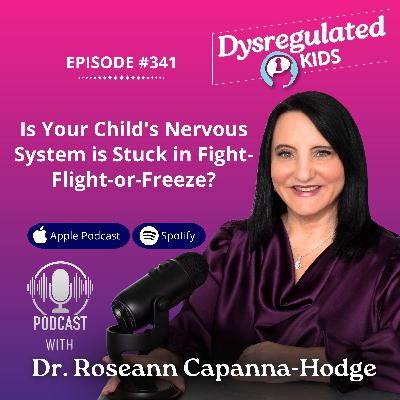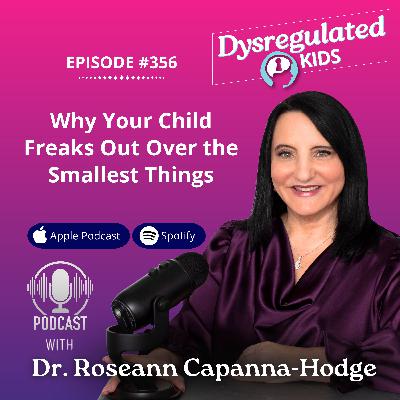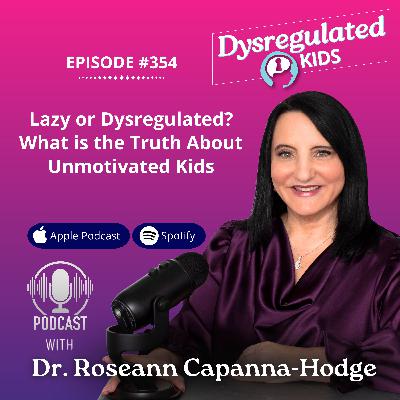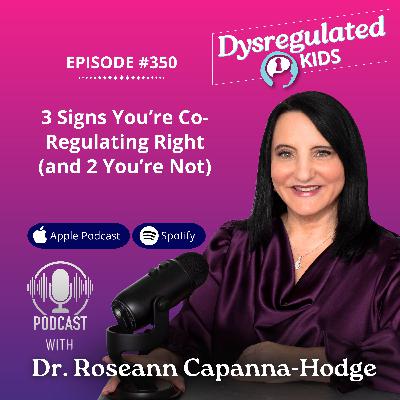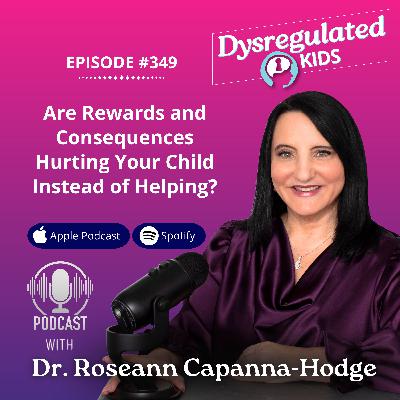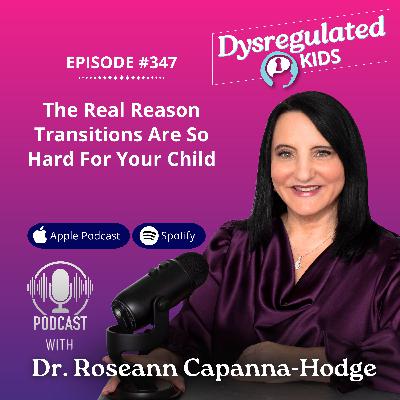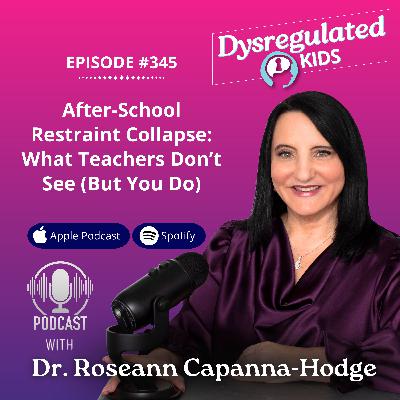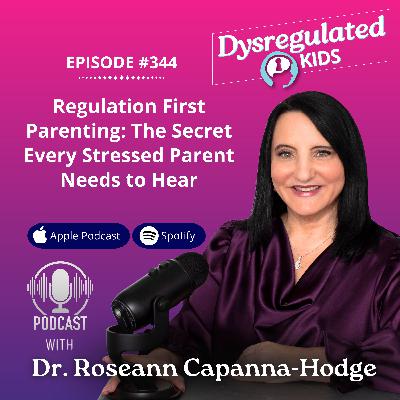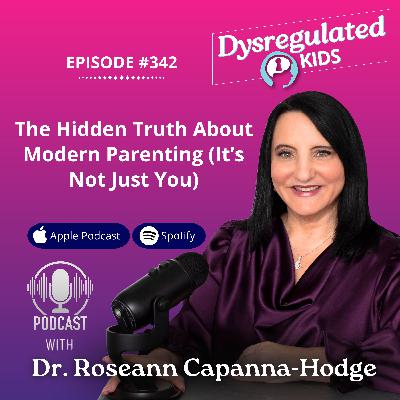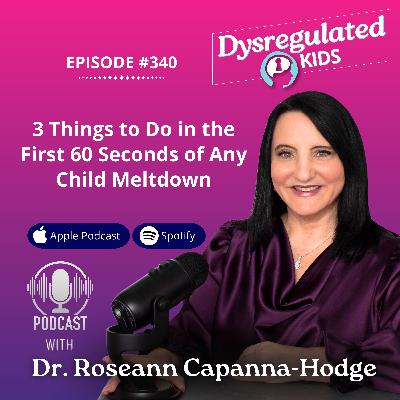341: Is Your Child's Nervous System is Stuck in Fight-Flight-or-Freeze?
Description
When your child’s nervous system is stuck in fight, flight, or freeze, even minor frustrations can trigger explosive outbursts, shutdowns, or runaway behavior. It isn’t disobedience—it’s the autonomic nervous system in survival mode.
Let us unpack why kids get trapped in these stress responses and how calming the brain first restores safety, regulation, and connection.
Why does my child melt down after minor frustrations?
When your child yells, slams doors, or shuts down over something small, it’s not misbehavior—it’s a stress response. Their sympathetic nervous system is in overdrive, pumping out stress hormones like cortisol and adrenaline.
Signs your child’s nervous system is stuck in fight, flight, or freeze:
- Frequent emotional meltdowns and explosive outbursts
- Overreaction to minor frustrations with big emotions
- Needs 20–30 minutes (or more) to return to calm
- Mood changes, poor focus, and low energy that linger afterward
Behavior is communication. What looks like defiance is really your child’s nervous system waving a red flag for help.
What does fight, flight, freeze, or fawn look like in kids?
Kids react to stress in different ways, but all of these behaviors come from the same alarm system in the nervous system.
- Fight: yelling, arguing, aggression, lashing out
- Flight response: running away, hiding, avoiding tasks
- Freeze response: zoning out, poor concentration, blank stares, silence
- Fawn: perfectionism, hypervigilance, people-pleasing (often missed)
These are autonomic survival responses—not bad choices.
🗣️ “When your child’s body feels threatened, the nervous system takes over.” – Dr. Roseann
Why is my child’s nervous system stuck in survival mode?
Today’s kids face a perfect storm of stressors that disrupt the autonomic nervous system and keep the body stuck in fight, flight, or freeze.
Common triggers include:
- Chronic stress at school or home
- Family tension or sibling conflict
- Sensory overload from screens, noise, or crowds
- Mental health conditions and neurodivergent wiring
- Poor sleep patterns or lack of optimal nutrition
- Physical hurdles like abdominal pain, onset headaches, or body aches
When stress hormones keep firing, the parasympathetic nervous system (the body’s relaxation response) can’t kick in. Over time, this shows up as:
- Heightened baseline anxiety and panic responses
- Concentration troubles, poor focus, and low energy
- Frequent illnesses, decreased immunity, and persistent fatigue
- Other chronic health challenges like disrupted sleep or mood swings
A child’s nervous system stuck in survival mode is more vulnerable to behavioral challenges and chronic health conditions. The missing link is daily regulation that restores safety and calm.
When your child is dysregulated, it’s easy to feel helpless.
The Regulation Rescue Kit gives you the scripts and strategies you need to stay grounded and in control.
Become a Dysregulation Insider VIP at www.drroseann.com/newsletter and get your free kit today.
How can I help my child reset their nervous system?
The first step is always this: Let’s calm the brain first. You can’t teach coping skills or set limits when your child’s nervous system is stuck in fight, flight, or freeze and feels unsafe.
Simple ways to support regulation:
- Co-regulation: Your calm helps their calm. Use a soft tone, gentle eye contact, and steady presence.
- Breathing exercises: Deep breathing helps reset the vagus nerve and activate the parasympathetic nervous system (the body’s relaxation response).
- Movement & rhythm: Walking, rocking, or humming helps release stress chemicals and lower body tension.
- Predictable routines: Structure signals safety to a child’s nervous system and supports better sleep patterns.
- Daily resets: Sensory tools, quiet time, or nature breaks help prevent frequent emotional meltdowns.
- Optimal nutrition & natural supplements: Magnesium and other supports replenish drained reserves and promote more energy and better sleep patterns.
Daily nervous system care works better than reacting in the heat of a meltdown. These small, consistent resets protect your child’s health, calm their body, and build long-term resilience.
When your child is stuck in fight or flight mode, remember: It’s not a behavior problem—it’s a nervous system problem. By focusing on regulation first, you give your child the foundation for better sleep, more energy, stronger immunity, and improved emotional regulation.
Tired of not knowing what’s really going on with your child?
The Solution Matcher gives you a personalized recommendation based on your child’s behavior, not just a label.
It’s free, takes just a few minutes, and shows you the best next step. Go to www.drroseann.com/help
Want a calmer child in just one week? Try Quick Calm—the reset built for busy parents who need fast, effective tools.
FAQs
Why does my child’s body feel unsafe over small things?
When stuck in survival mode, the brain sees minor frustrations as major threats. The alarm system of the nervous system misfires, keeping your child on high alert.
Can a child’s nervous system affect physical health?
Yes. A stuck nervous system can disrupt vital processes, leading to frequent illnesses, decreased immunity, abdominal pain, headaches, and persistent fatigue. Stress doesn’t just affect mood—it impacts the whole body.
How does stress disrupt sleep patterns in kids?
When a child’s brain is stuck in fight, flight, or freeze, stress hormones like cortisol stay elevated. Instead of resting, their nervous system stays on high alert—leading to nightmares, tossing and turning, or trouble falling asleep. Calm the brain first, and sleep improves.

